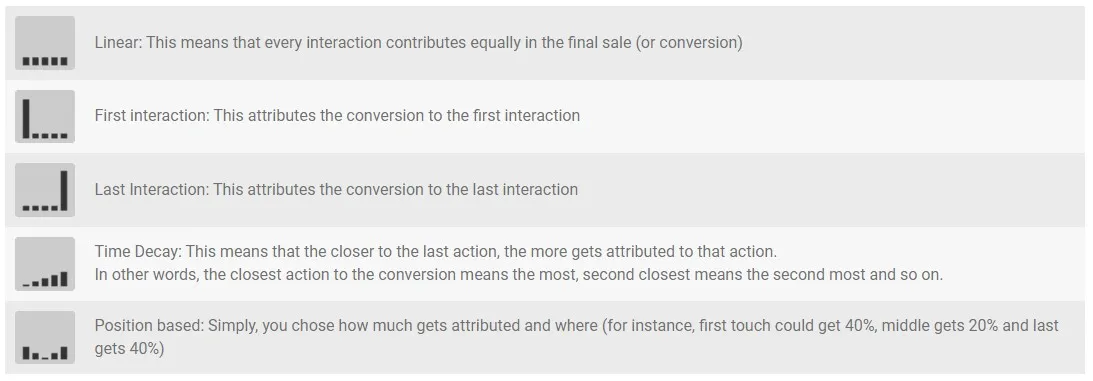

Posted in Software & Development
October 15, 2020
Attribution modelling for dummies
Knowing where your conversions come from is critical to understanding the path that leads your users to take action. The goal is to then replicate the successful traffic patterns to increase the number of conversions. Learn how attribution modelling can help.
Continue with the rest of the blog article here. Make sure to use the correct heading structure and add any anchors needed for the featured snippet links above.
First of all, what is attribution modelling?
It is the model in which you decide what channel (where your traffic comes from) gets credit for conversion whether that’s a sale, a lead, or an action taken on your website.
At first glance, it seems simple. A user visits your site through a PPC ad and buys something. Therefore, 1 user through 1 PPC ad = 1 sale. Done. Your ad works, your marketing is successful. Congrats!
Whoa, Nelly, not so fast.
What if that person came to your site through Facebook first, saw a retargeted ad, searched Google organically, and finally clicked on your PPC ad to make that purchase. Is your formula still the same? Does that last interaction with the PPC ad get all the credit? Or does Facebook get some credit for attracting that customer in the first place? Without Facebook, would you have that customer at all? Maybe Facebook should get all the credit in that case.
Here’s where attribution modelling comes into play. Google Analytics gives you the option to use the following default models or you can make your own custom one specific to your business:

So what’s the best option to judge your success on? That is a very hard question to answer and will vary a lot depending on your users and your marketing strategies.
If you do digital marketing all over the place using many methods (multi-channel or omnichannel), you will likely have more touchpoints on your users whereas if you do no digital marketing and all of your traffic comes through organic search, it will be much clearer where the conversion can be attributed to.
Attribution Model Analysis
Under Conversions in Google Analytics, there is an “Attribution” dropdown. Here you can compare the different models.
Here is a quick example of what this can look like. For this site, there is a big push through paid search. In this case, more people find the company through paid search first but far fewer buy directly (last interaction) after coming through an ad. This would suggest that people find this company through paid search but then do research elsewhere before coming back to purchase through another channel.

This is just one quick example of an insight that you can pull out of this report, but this is an incredibly powerful tool that can really help you better understand how your marketing efforts affect your bottom line as well as help your marketing team judge what's working, what’s not, and where improvements can be made.


